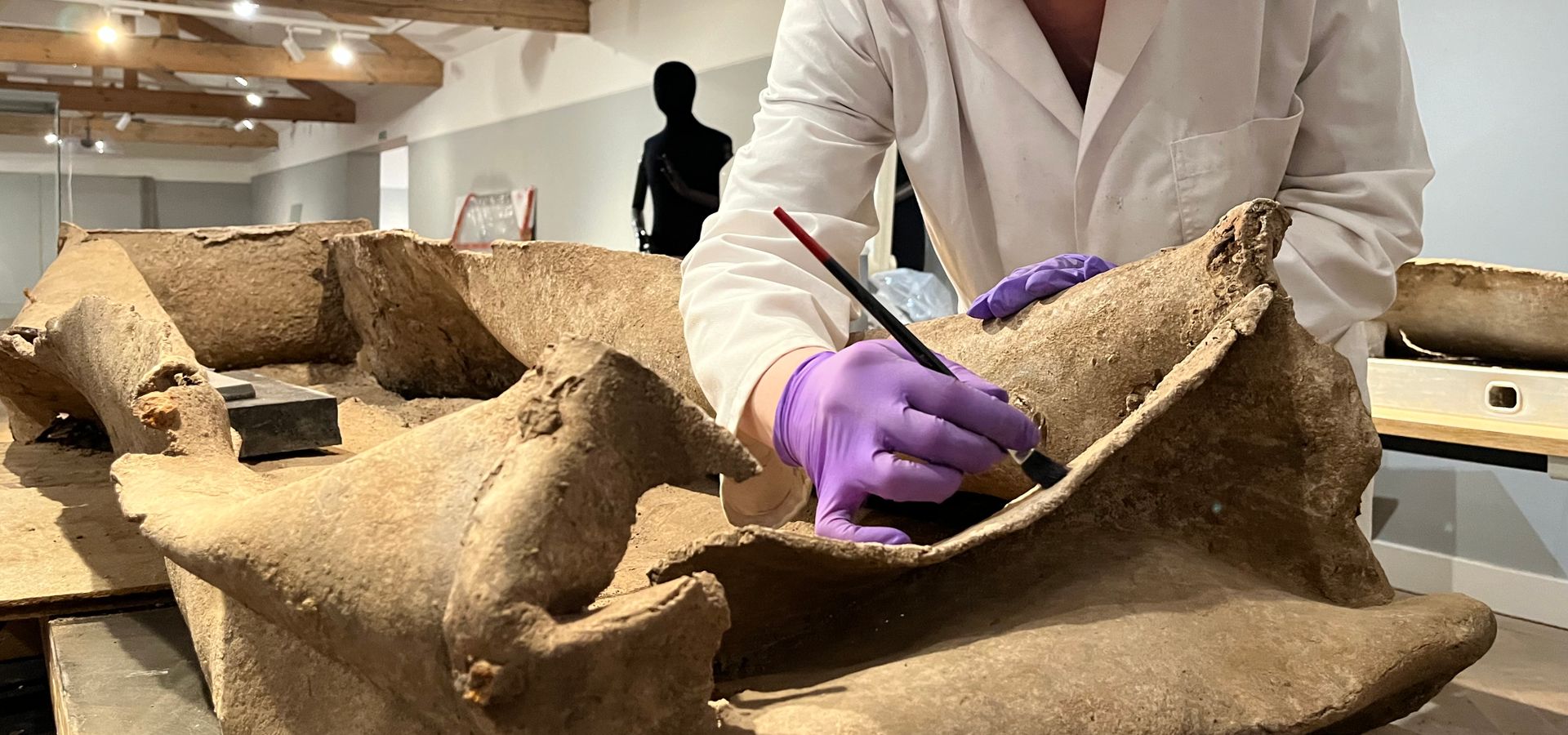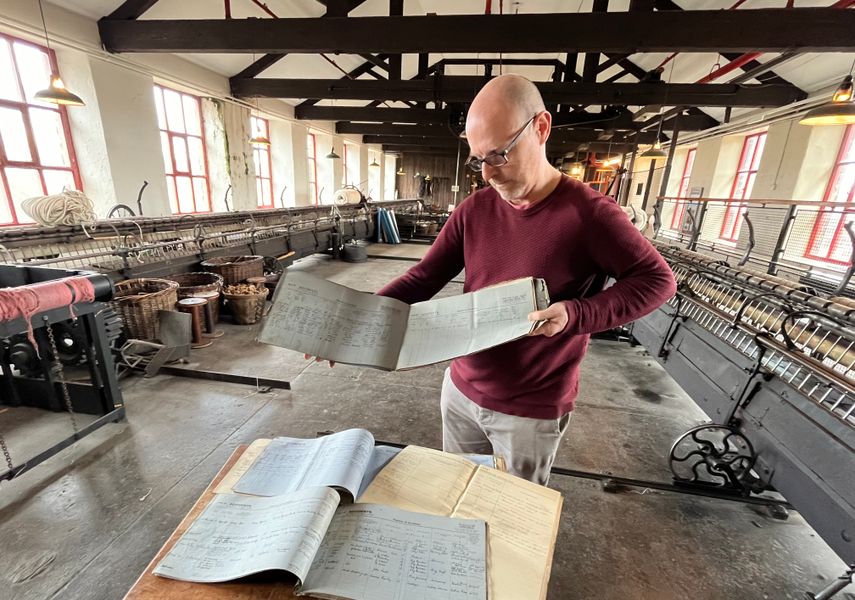
Human Remains Policy
1. Statement of Purpose
Leeds Museums and Galleries (LMG) acknowledges that human remains were once parts of living people and will care for them in a respectful manner while also making the collections available for research and engagement where appropriate.
LMG defines human remains as the bodies, and parts of bodies, of once living people from the species Homo sapiens (defined as individuals who fall within the range of anatomical forms known today and in the recent past.) This includes osteological material (whole or part skeletons, individual bone and teeth), soft tissue including organs and skin, embryos and slide preparations of human tissue, hair and nails taken post mortem (DCMS Guidance for the Care of Human Remains in Museums, 2005 & clarification on definition 2008).
2. Legal Framework
LMG will adhere to all national and international statutes of law specifically, but not exclusively, in relation to human remains, including the Convention for the Protection of Human Rights and Fundamental Freedoms, Human Rights Act 1998 and the Human Tissue Act 2004.
LMG acknowledges that under the laws of England and Wales there is no recognised concept of property (i.e. right of ownership) in human bodies or tissue, only custody (DCMS Guidance for the Care of Human Remains in Museums, 2005). The exceptions are where remains have been treated or altered through the application of skill to make them into an artefact.
LMG remains responsible for the care and management of human remains within its custody.
3. Due Diligence
LM&G will exercise due diligence in all aspects associated with human remains and its management of those collections.
4. Ethical Framework
LM&G acknowledges that the ethical issues raised by human remains within museums are complex. LM&G will adhere to the ICOM code of ethics (2006), the Museums Association Code of ethics (2007), DCM’s Guidance for the Care of Human Remains in Museums (2005), and the Guidelines published by English Heritage in collaboration with the Church of England (2005) on the ethical, archaeological, scientific and legal considerations associated with excavation, study and archiving of human remains and associated artefacts and grave-markers from Christian burial sites in England.
LMG carried out visitor consultation in 2018 which showed that visitors were generally in favour of museums holding, and using, human remains. LMG will always be open to conversation with individuals or organisations regarding both this policy in general or individual items in its care, with the ambition to find a balance between any differing views.
5. Leeds Collections
The human remains cared for within Leeds Museums and Galleries’ collections have been acquired over the 200 year history of the organisation. We continue to investigate, evaluate and research our holdings to develop a broader understanding of the collections in our care. LMG believes that there are public benefits for the retention of human remains. These include display, research, and teaching, to enable us to understand the history of the world and our place within it.
6. Collecting and Disposal
LMG will collect and dispose of human remains within a legal, ethical and due diligent framework with full provenance, in accordance with the Leeds Museums and Galleries Collections Development Policy.
7. Access and Use
LMG recognises that human remains can be an important source of direct evidence about the past, as set out in DCMS Guidance (2005). All requests to use human remains in any way are subject to approval by the Human Remains Working Group on a case by case basis. This includes requests from both inside and outside LMG for display, loan, research (including destructive sampling), photography, or for use in engagement sessions.
LMG will only use images of human remains in interpretation or in marketing (including the website) after approval by the Human Remains Working Group. Images of human remains will be used only if pertinent to the accompanying content.
LMG permits respectful photography of human remains on display. This is supported by visitor consultation carried out in 2018.
We will keep abreast of best practice in the field, current thinking and positions of interested groups and will consult as appropriate and where possible.
8. Repatriation Claims
Any requests for repatriation of items will be dealt with in an open and constructive manner, on a case by case basis within its legal position and taking into account all ethical implications and available guidance.
9. Policy Review
This Human Remains policy will be reviewed from time to time, but at least once every five years. This must be agreed by both the Human Remains Working Group and LMG Senior Management Team.
10. Collection Descriptions
10.1 Archaeology
The human remains collection in the LM&G archaeology collection, although not large, ranges widely in terms of both date (Prehistoric to early Modern) and geography (overseas, UK-wide and local).
LMG care for the mummified remains of an Egyptian priest, Nesymaun, who died c.1100 BC. Other overseas human remains include two Egyptian skulls, one from a Turkish cemetery; and the urn and cremated remains of a Roman person from Ventimiglia.
LMG holds two large and significant local collections of skeletons from the Iron Age / Romano-British sites of Dalton Parlours and Wattle Syke. The skeletons of 72 individuals are represented, a significant number of which are neonates and infants.
The remaining collection is a miscellaneous group of partial human skeletons and cremations from the UK. These remains include Bronze Age skulls from Barham Downs, Kent; Roman skeletons from Ferry Fryston, Castleford; and fragments of human bone from Harewood House north tomb, as well as material from many other sites. The unprovenanced human remains have been investigated and have shown a wide range of pathologies, non-metric traits and representations of demographic traits, which have potential for teaching and learning.
10.2 Fine and Decorative Arts
Within the Fine and Decorative Arts Collections there are very minor holdings of items containing or using human remains. Within the Fine Art Collections there are human remains used within art works which are all pre-mortem. The Decorative Arts Collections contain two lockets containing hair associated with Temple Newsam and one lock of hair mounted on card associated with Lotherton Hall. All are provenanced to individuals.
10.3 Social History, Dress and Textiles
The human remains in these collections consists primarily of hair, made into jewellery items and mainly from the Victorian era.
10.4 Natural Science
The human remains holdings in the Natural Sciences consists mainly of unprovenanced skeletal material, some hair and nail samples.
10.5 World Cultures
Only one un-artefacted skull is part of the LM&G permanent Anthropology collections, an Indian skull marked “Skull of Hindoo. Bank of Ganges” on the forehead and “Presented by H.C. Marshall Esq.” on left side (LEEDM.F.1981.0099), which is typical of collecting attitudes by many colonial Victorian visitors to this holy site for cremations in India. Five other, presumably European, historic skulls came on loan from Salford in 1982 (LEEDM.F.L.1982.16,17,18,19,20), only one has a source attribution, an old museum label pasted on top: PRESENTED BY THE FEOFFEES OF THE CHETHAM LIBRARY, MANCHESTER. These five skulls came together with three skull casts representing “Gibraltar Man” (Neanderthal), Java Man, “Rhodesian Man” (LEEDM.F.L.1982.13,14,15) and “Piltdown Man” (the famous forgery, LEEDM.D.T.0522.1-8). This group of skulls and casts reflects late 19th century interests and is part of the history of the study of human evolution by local antiquarians and scholars. Leeds will be discussing the formal transfer of this loan with Salford shortly, as the material complements human remains in the Leeds Archaeology collections.
Leeds has five artefacted human bone items from Tibet, two ornamented skull cups (LEEDM.F.1959.0041 and LEEDM.F.1959.0042), a plain skull bowl (LEEDM.F.2007.2.201), a thigh bone trumpet (LEEDM.F.2007.2.200) and prayer beads that are most probably made of human bone (LEEDM.F.2007.2.202). The last three items were transferred from Hampshire County Museum and Archive Service in 2007. Tibetan use of the bones of respected religious leaders and saints in the making of vessels and instruments for veneration is world famous and it is appropriate to research and display them in accordance with Tibetan Buddhist beliefs, following the good example of Glasgow, Liverpool and Edinburgh Museums, with contact from Tibetan Buddhist inspired communities in the UK (such as Samye Ling in the Scottish Borders).
Leeds has a Jivaro shrunken head, purchased in 1947 at the sale at Scarthing Well Hall near Tadcaster, a house that then belonged to the Maxwell-Stuart family. These heads are of enemies, artefacted by boiling and heating with sand to miniaturise them. They are made up of skin and hair alone (removed from the skull). No history of how or when this particular example was collected is known, and current research is attempting to determine whether this is a real human shrunken head (and if it is Jivaro made or another Ecuador people used by local fakers), or an imitation made using another mammal (usually sloth or Howler monkey). The head was displayed in an exhibition by young curators for the Cultural Olympiad at Leeds City Museum in 2012, called Treasured, in which they will tackle the ethical issues on collecting directly (including the collection of human remains), and so engage in a useful debate with our local public.
We have also put the status flag of human remains on a broad range of items which incorporate human hair in the Anthropology collections, as we cannot be certain that the hair in these cases was taken from living rather than dead humans (though the former is more likely). The human hair items include Chinese mandarin que or pigtails, A Daoist embroidery where the figures have real hair moustaches and beards, Gilbert Island swords and knives with human hair bindings, and a Turkish doll with a real hair moustache.
We believe it is not ethical to acquire any skeletal remains for the Anthropology or World Culture collections in the future, and would also hesitate and take specialist advice if offered sacred bone items, from Tibet or elsewhere.
11. Further reading
David, A.R. and Tapp, Dr E (eds) (1992) ‘The Mummy’s Tale: The Scientific and Medical Investigation of Natsef-Amun, Priest in the Temple at Karnak’.
Wrathmell, S. and Nicholson, A (eds) (1990) ‘Dalton Parlours: Iron Age Settlement and Roman Villa’.
Martin, L et al (2013) ‘Iron Age and Roman Settlements at Wattle Syke: Archaeological Investigations During the A1 Bramham to Wetherby Upgrading Scheme’.
Fletcher, J (2011) ‘Unprovenanced Human Remains at Leeds Museums and Galleries’, Interim Report [unpublished].
LMG Visitor Consultation Human Remains and Ethics report (2018) [unpublished]

Leeds Museums and Galleries Policies
Read our policies across our venues, collections and practices.
